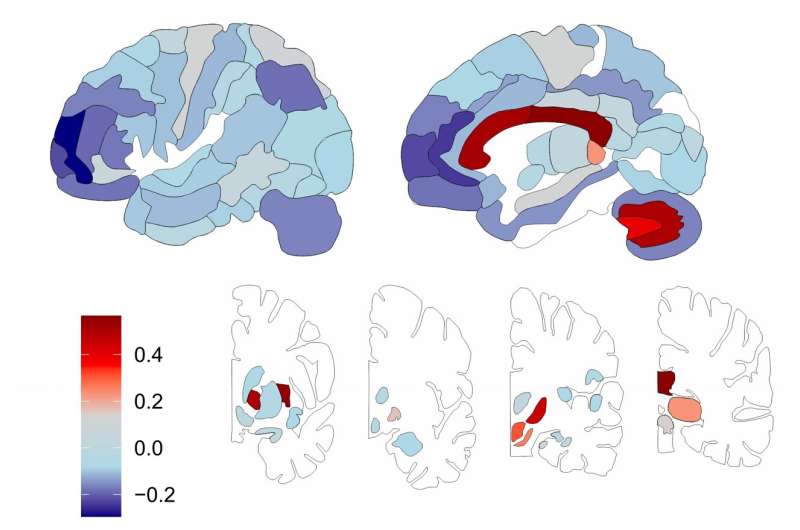This article has been reviewed according to Science X's editorial process and policies. Editors have highlighted the following attributes while ensuring the content's credibility:
fact-checked
peer-reviewed publication
trusted source
proofread
Scientists map the distribution of lipids in the human brain

Scientists have found that 93% of the lipids in brain tissue are distributed differently in the white and gray matter, the subcortex, the visual and motor cortices, and the prefrontal cortex, which is responsible for decision-making, social behavior, and other functions.
Abnormalities in the brain lipidome tend to occur in mental and cognitive disorders, so mapping these molecules should help gain more information about the disease. The research was published in Nature Communications.
A major component of brain tissue, lipids are fatty compounds that make up 35%–40% of all the molecules in the gray matter cell bodies and as much as 78% of the axons' myelin sheaths in the white matter. Brain tissue lipids are very diverse and include cholesterol, phosphorus-containing compounds, such as phospholipids and sphingolipids, and other molecules.
Since lipids are involved in the metabolism and growth of neurons, the delivery of signals between cells and the control of inflammatory processes, abnormalities in the lipidome composition have been associated with cognitive disorders, such as autism, schizophrenia, and Alzheimer's disease.
However, the relationship between the lipidome and the structural features of brain tissue remains poorly understood, limiting the use of lipids as molecular markers for detecting brain diseases.
Researchers from the Skolkovo Institute of Science and Technology and their colleagues have created the world's first map of human brain lipids. They studied brain tissue samples from four healthy individuals and assessed the lipid composition in 75 different parts of the brain.
The lipids in the samples were identified using mass spectrometry, which allows determining a molecule's structure from the mass to charge ratio and its motion pattern in a magnetic field.
The researchers found a total of 419 different lipids, most of them (93%) unevenly distributed among the different parts of the human brain. For example, the subcortex (the oldest part of the brain), motor and visual cortices had relatively high levels of cholesterol, while the prefrontal cortex responsible for complex social behavior and decision-making had relatively low levels of this lipid.
Since most lipids are found in the myelin sheaths, the team checked whether the myelin content in a particular part of the brain affected its typical lipidome. The myelin-rich white matter turned out to contain mostly ceramides, two classes of phospholipids, and lipids with saturated fatty acids.
Since the main function of the white matter is to transmit signals via axons, these types of lipids are thought to be essential for the tissue to perform its function.
Polyunsaturated fatty acid lipids prevailed in the gray matter, which contains a concentration of cell bodies rather than axons and virtually no myelin. This suggests that such molecules may be important for signal processing in cells.
"In the future, we plan to thoroughly investigate the subcortical lipidome which was only partially covered by this research, and to study brain samples from patients with various mental disorders.
"The potential complete 'decoding' of the lipidome will help us to better understand the nature of mental illness and its impact on the structure and functioning of the brain," said Maria Osetrova, a research engineer at the Skoltech Neuro Center.
Other organizations involved in this research included Lomonosov Moscow State University, the Semenov Federal Research Center for Chemical Physics of RAS (Moscow), the University of Leipzig (Germany), and the National University of Singapore.
More information: Maria Osetrova et al, Lipidome atlas of the adult human brain, Nature Communications (2024). DOI: 10.1038/s41467-024-48734-y



















